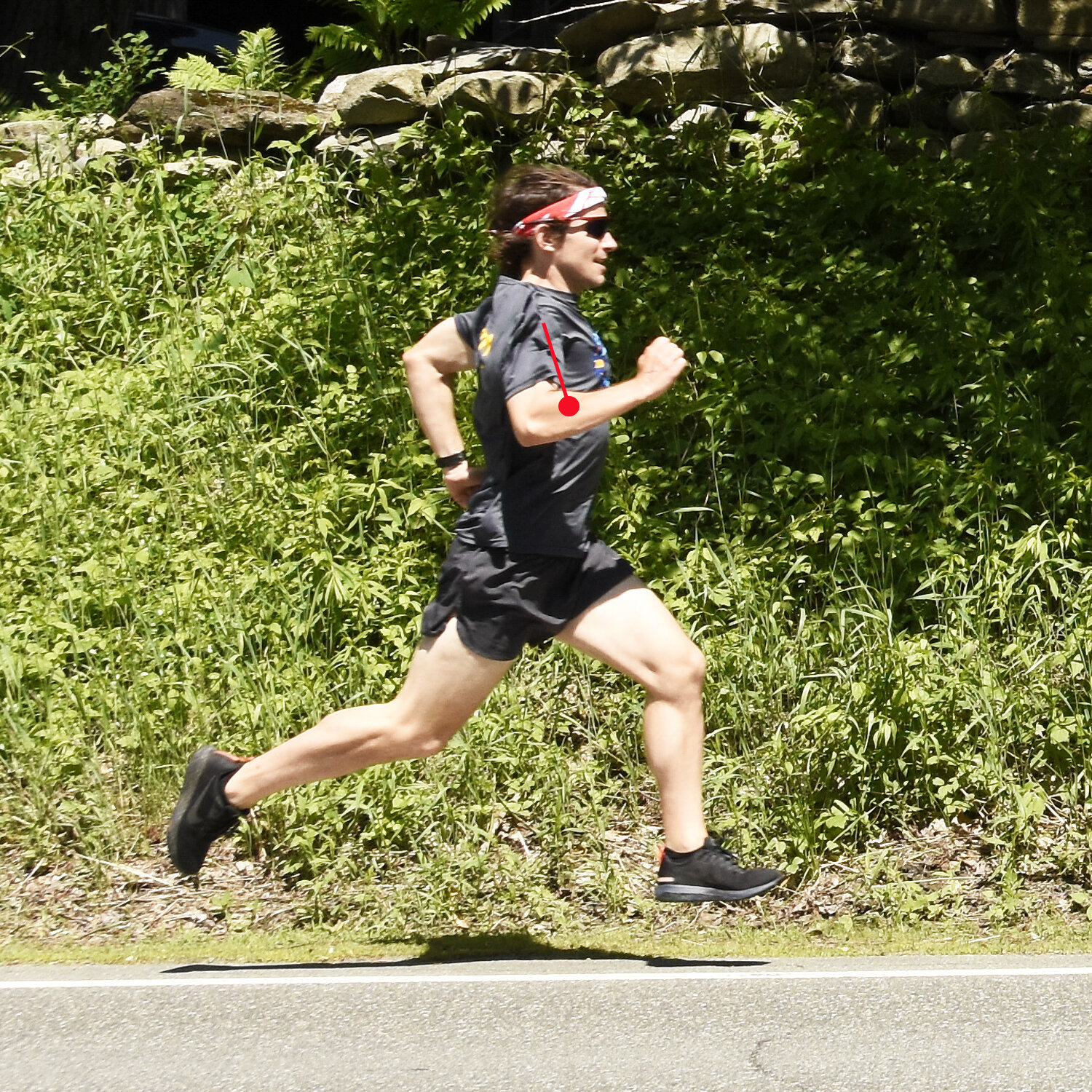Swings
Swings are a lot like springs. Their back and forth motion can be described using forces or using conservation of energy. While many springs are hidden inside equipment, like scales and cars, swings are easy to spot, especially on playgrounds.
Swings are like bouncing springs in many ways.
When you hang a weight on a spring and let it come to rest, the weight and spring are in an equilibrium position. This position will not change unless some new force acts on the weight, like when you pull it down and let it go. What is the corresponding equilibrium position for a swing? It is the position you are in when you are sitting at the lowest point with the ropes pointing straight up above you. In this position, your weight (pointing down) is balanced by the force exerted by the ropes (pointing up). The upward force is called the tension in the rope (or ropes, if there are two of them). If the tension can’t balance your weight, the ropes will snap and you will fall onto the ground!
The equilibrium position on a swing is when you are sitting at the lowest point with the ropes pointing straight up.
With a weight on a spring, you need to pull the weight down below (or lift it above) the equilibrium position in order to get the weight to start bouncing. On a swing, you need to move away from the equilibrium position to start swinging. One way is to have someone pull you up a bit and to the side, keeping the ropes of the swing tight.
One way to start swinging is to have someone pull you up and to the side.
Another way is to get someone to push you up and over to the side.
Another way to start swinging is to get a push up and over to the side.
And if you are really brave, you can climb a ladder and jump on the swing.
Jumping off a ladder on the side also helps a swing start swinging.
Using Conservation of Energy to Explain Swinging Motion
In each of these examples, work is being done to move you away from the equilibrium position. That is, a force - pushing, pulling or lifting - is applied along some distance. The work done causes you to gain potential energy due to an increased height above the equilibrium position. When you and the swing are free to move, that potential energy starts to be converted to kinetic energy as your height off the ground reduces and you start to go faster. At the equilibrium position - the lowest point on the swing - you have no potential energy but you have maximum speed and therefore maximum kinetic energy. The swing now starts to move up on the other side. Your height above equilibrium increases, and so does the potential energy. Your speed reduces, and so does the kinetic energy. When you reach the point of maximum height on the other side, you once again have maximum potential energy. Your velocity is zero as you stop and change direction, so the kinetic energy at this point is zero as well. This pattern repeats itself, over and over. Like an object bouncing up and down on a spring, the swing is another example of an oscillator.
When you are on a swing, your energy changes from potential to kinetic and back to potential as you move from one side to the other.
Using Forces to Explain Swinging Motion
Another way to describe the motion of a swing is to use forces. When you sit on a swing in the equilibrium position, there are two forces acting, as was mentioned earlier. First, there is your weight pointing down. Second, the tension in the rope (or ropes) points up and is equal and opposite your weight. These two forces cancel each other - the sum is zero - so there is no net force acting. This is true when you are sitting still at the equilibrium position. It is also true when you are moving quickly through the equilibrium position when you are swinging!
When you are at any position on the swing that is not the equilibrium position, your weight still points down toward the earth and the tension still points up along the rope (or is divided between two ropes, depending on the way the swing is built). But these two forces don’t cancel when the rope is at an angle, instead of straight up and down. To figure out the net force, we need to do some vector addition.
In the equilibrium position, your weight is balanced by the tension in the rope (or ropes). At any other position, the directions of your weight and the tension in the rope differ. The net force is what causes you to move.
As you may recall from the Moving section, any force can be broken down into two components that are perpendicular to one another. In this example, the weight vector can be broken down into one component that is parallel to the tension in the rope (W2, but pointing down instead of up) and another component that is perpendicular to the rope (W1). When you are on a swing, your motion is always perpendicular to the rope. That is, you don’t slide up or down the rope when you are swinging. This means that the forces along the rope must be balanced - the tension in the rope, T, must be equal and opposite W2. The remaining component, W1, is the net force. Looking at the diagram, you can see that W1 acts to pull you back toward the equilibrium position. As you get farther from equilibrium on either side, W1 gets larger and both W2 and T get smaller. In fact, the tension in the rope is smaller than your weight when you are anywhere but in the equilibrium position.
The Period of Oscillation for a Swing
A swing is one example of a pendulum. You have probably seen a pendulum on an old-fashioned clock. It has a length of wire that goes from a pivot point up top to a weight of some sort attached to the bottom. A pendulum is an oscillator, just like a person on a swing or a weight bouncing on a spring. Recall that the period of a weight bouncing on a spring depends on the stiffness of the spring and the amount of weight attached to the end. For a pendulum, the period of oscillation depends only on its length. The amount of weight that is swinging back and forth doesn’t matter!
As an example, compare what happens when you ride on a big swing and when you ride on a small swing. It takes a lot longer to go back and forth on a big swing than it does on a small swing. For the large swing on the left below, it takes 2 seconds to get from one side to the other, so it takes 4 seconds to complete one full oscillation, where you return to your starting point. The period is therefore 4 seconds. The frequency is the number of oscillations (or cycles) completed per second and in this case, it is 1/4 cycles/sec (or 0.25 cycles/sec). For the small swing on the right, it takes 1 second to go from one side to the other, so the period is 2 seconds and the frequency is 1/2 cycles/sec (or 0.5 cycles/sec). This is true for pendulums in general. The period is long for a long pendulum and short for a short pendulum. We can also say that the frequency is low for a long pendulum and high for a short pendulum.
What happens if you and a friend ride on the same swing? Even if one of you is heavier than the other, the time it takes to complete one full oscillation is the same, since the length of the swing is the same for both of you.
Not all pendulums are in the perfect form of a weight attached to the bottom of a wire or a person attached to the bottom of a rope. There is another kind that is familiar to all of us. Each of our arms is like a pendulum when we are walking and running. Every person has a unique walking or running style, so to understand this, it helps to look at the arms of the same person walking, jogging, and running.
When you are walking, let’s say it takes 1 second for you to take 1 step forward. The period of two complete steps - right foot then left foot - is 2 seconds. Your arms tend to hang straight as they swing back and forth in pace with your steps as you walk, as shown in the left image above. You can imagine a pendulum hanging from your shoulder with a weight somewhere on your forearm. That pendulum would swing with the same frequency as your arm to match the frequency of your walking steps.
When you start to jog, you pick up the pace a bit. Now let’s say it takes 3/4 second for you to take 1 step forward. The period of two complete steps is now 1.5 seconds. What happens with your arms? They bend at the elbows a bit in order to keep pace with your jogging gait, as shown in the middle image above. The position of the weight on the imaginary pendulum moves up a bit when you bend your arm at the elbow because more of your arm’s weight is now closer to your shoulder. The shortened length of the pendulum (your bent arm) is needed to keep pace with the shortened period of oscillation of your jogging gait.
When you run, the time it takes you to take a step reduces even further, to perhaps 1/2 second per step or 1 second for two steps. To keep up with this pace, your arms bend even more at the elbows, as shown on the right. By bending even more, more of your arm’s weight is closer to your shoulder so the weight at the end of the imaginary pendulum moves closer to your shoulder too, allowing for a shorter period of oscillation to match the frequency of your running legs.













